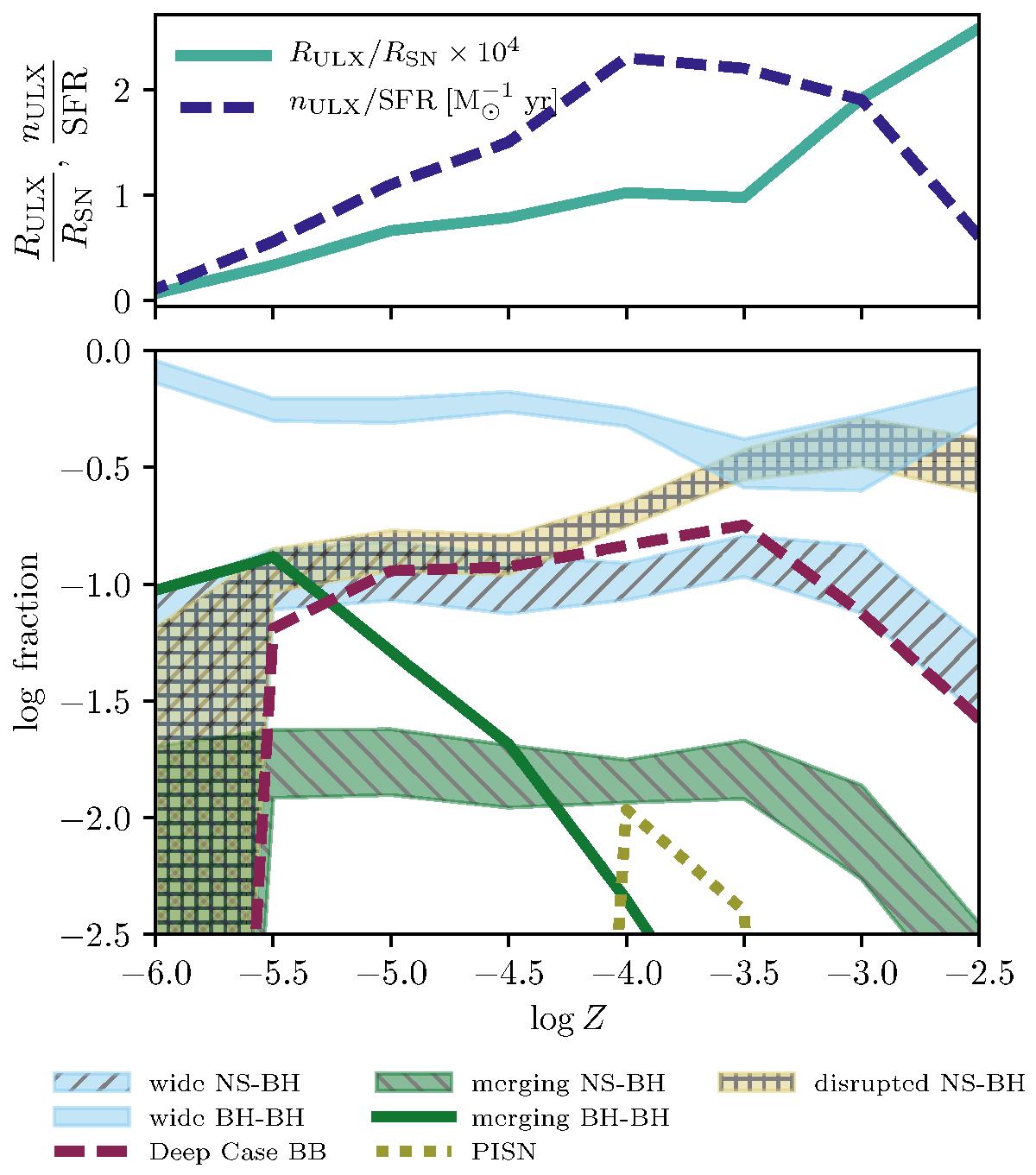Fig. 15

Top: Production rate of ULXs in terms of the SN rate, and number of observable ULXs per M⊙ yr-1 of SFR. Bottom: Final outcomes after a ULX phase, represented as the fraction of the total of ULXs. Wide NS-BH and BH-BH systems correspond to binaries for which the merger time from GWs is longer than 13.8 Gyr, while merging NS-BH and BH-BH systems are compact and/or eccentric enough to merge in less than a Hubble time. Disrupted NS-BH systems correspond to binaries that were disrupted by the kick imparted on the NS, while the number of disrupted BH-BH systems is negligible. Systems marked as Deep Case BB widen significantly, due to mass transfer stripping hydrogen depleted layers of the donor, and we do not model them until core-carbon depletion. A small fraction of systems marked as PISN have secondaries massive enough to explode as PISNe, leaving only the BH produced by the primary. The values for NS-BH binaries and for wide BH-BH binaries depend on the choice of threshold mass for BH formation.
Current usage metrics show cumulative count of Article Views (full-text article views including HTML views, PDF and ePub downloads, according to the available data) and Abstracts Views on Vision4Press platform.
Data correspond to usage on the plateform after 2015. The current usage metrics is available 48-96 hours after online publication and is updated daily on week days.
Initial download of the metrics may take a while.


